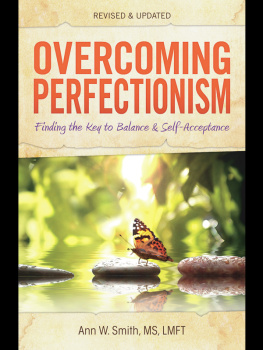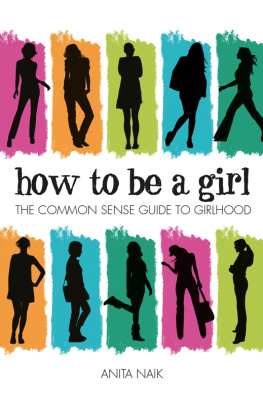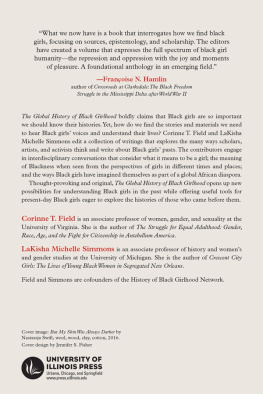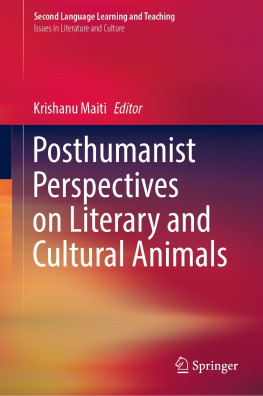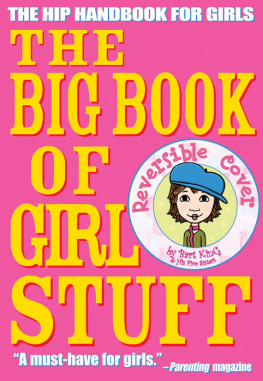THE GIRL IN THE TEXT
Transnational Girlhoods
EDITORS: Claudia Mitchell, McGill University; Bodil Formark, Ume University; Ann Smith; McGill University; Heather Switzer, Arizona State University
Girlhood Studies has emerged over the last decade as a strong area of interdisciplinary research and activism, encompassing studies of feminism, women and gender, and childhood and youth and extending into such areas as sociology, anthropology, development studies, childrens literature, and cultural studies. As the first book series to focus specifically on this exciting field, Transnational Girlhoods will help to advance the research and activism agenda by publishing full-length monographs and edited collections that reflect a robust interdisciplinary and global perspective. International in scope, the series will draw on a vibrant network of girlhood scholars already active across North America, Europe, Russia, Oceania, and Africa, while forging connections with new activist and scholarly communities.
Volume 1
The Girl in the Text
Edited by Ann Smith
Forthcoming:
Ethical Practice in Participatory Visual Research with Girls and Young Women Edited by April Mandrona, Relebohile Moletsane, Astrid Treffrey-Goatley, Lisa Wiebesiek
Living Like a Girl
Edited by Maria Vogel and Linda Arnell
For a full volume listing, please see the series page on our website: www.berghahnbooks.com/series/transnational-girlhoods.
THE GIRL IN THE TEXT
Edited By
Ann Smith

First published in 2019 by
Berghahn Books
www.berghahnbooks.com
2019 Berghahn Books
All rights reserved. Except for the quotation of short passages for the purposes of criticism and review, no part of this book may be reproduced in any form or by any means, electronic or mechanical, including photocopying, recording, or any information storage and retrieval system now known or to be invented, without written permission of the publisher.
Library of Congress Cataloging-in-Publication Data
Names: Smith, Ann. | Smith, Ann, PhD in Feminist Literary Theory editor.
Title: The girl in the text / edited by Ann Smith.
Description: First Edition. | New York : Berghahn Books, [2019] | Series:
Transnational girlhoods ; 1 | Includes bibliographical references and
index.
Identifiers: LCCN 2019001628 (print) | LCCN 2019017333 (ebook) | ISBN
9781789203257 (ebook) | ISBN 9781789203233 (hbk : alk. paper) | ISBN
9781789203240 (pbk : alk. paper)
Subjects: LCSH: Girls. | Girls in literature.
Classification: LCC HQ798 (ebook) | LCC HQ798 .S567 2019 (print) | DDC
305.23082--dc23
LC record available at https://lccn.loc.gov/2019001628
British Library Cataloguing in Publication Data
A catalogue record for this book is available from the British Library
ISBN 978-1-78920-323-3 hardback
ISBN 978-1-78920-324-0 paperback
ISBN 978-1-78920-325-7 ebook
CONTENTS
Introduction
The Girl in the Text: Representations, Positions, and Perspectives
Ann Smith
Chapter 1
Naughtiest Girls, Go Girls, and Glitterbombs: Exploding Schoolgirl Fictions
Lucinda McKnight
Chapter 2
This Is My Story: The Reclaiming of Girls Education Discourses in Malala Yousafzais Autobiography
Rosie Walters
Chapter 3
The Girl: Dead
Fiona Nelson
Chapter 4
Girl Constructed in Two Nonfiction Texts: Sexual Subject? Desired Object?
Mary Ann Harlan
Chapter 5
Perfect Love in a Better World: Same-Sex Attraction between Girls
Wendy L. Rouse
Chapter 6
Narrating Muslim Girlhood in the Pakistani Cityscape of Graphic Narratives
Tehmina Pirzada
Chapter 7
Confronting Girl-bullying and Gaining Voice in Two Novels by Nicholasa Mohr
Barbara Roche Rico
Chapter 8
Like Alice, I was Brave: The Girl in the Text in Olemauns Residential School Narratives
Roxanne Harde
Chapter 9
Girl, Interrupted and Continued: Rethinking the Influence of Elena Fortns Celia
Ana Puchau de Lecea
Chapter 10
Lolita Speaks: Disrupting Nabokovs Aesthetic Bliss
Michele Meek
Chapter 11
Hope Chest: Demythologizing Girlhood in Kate Bernheimers Trilogy
Catriona McAra
Chapter 12
The Girl in the GIF: Reading the Self into Girlfriendship
Akane Kanai
Chapter 13
Girls Perspectives on (Mis)Representations of Girlhood in Hegemonic Media Texts
Paula MacDowell
Chapter 14
Using Fiction, Autoethnography, and Girls Lived Experience in Preparation for Playwriting
Genna Gardini
ILLUSTRATIONS
Illustration 6.1
Jiya and Burka Avenger in a Burka Avenger Poster (2012).
Illustration 6.2
Gogi in the village from the Going Gogi book (2009).
Illustration 7.1
Mural featuring Nicholasa Mohr by El Mac and Cero.
Illustration 11.1
Joseph Cornell, Untitled (Pink Palace), ca. 1950.
Illustration 11.2
Kate Bernheimer, A Lovely Naked Girl, 2001.
Illustration 12.1
Ex-boyfriend problems.
Illustration 12.2
Struggling to act cool.
for Claudia Mitchell, the woman in my text

INTRODUCTION
The Transnational Girl in the Text
Transnationalism Redefined?
Ann Smith
If transnationalism, in the literal sense, has to do with the ways in which borders between nation-states are becoming less rigid and more porous rather than impermeable, I want to begin by suggesting that the term can function, too, as a way of describing a weakening of cultural and other ethnic imperatives. Tsitsi Dangarembgas Nervous Conditions: A Novel (1988) seems to me to have illustrated this kind of transnationalism three decades ago, long before this notion became a topic of general interest. This work of fiction, set in what was then Rhodesia before the war of liberation, is about a young girl, Tambudzai, known as Tambu, who is given the opportunity to go to school, at the age of thirteen, only because her brother, Nhamo, has died. African girls were then (and many still are) caught up in a kind of nationalism that is fostered by, and demonstrated in, the historically and culturally held belief that African girls, particularly rural ones, are not to be educated; only boys are. It is worth quoting from the opening paragraphs at some length because here we see, at once, that Tambu, writing as a young woman years later, rejected this aspect of African nationalism even as a girl.
I was not sorry when my brother died. Nor am I apologising for my callousness, as you may define it, my lack of feeling Therefore I shall not apologise but begin by recalling the facts as I remember them that put me in a position to write this account. For though the event of my brothers passing and the events of my story cannot be separated, my story is not after all about death, but about my escape about my mothers entrapment; and about Nyashas rebellion Nyasha, far-minded and isolated, my uncles daughter, whose rebellion may not in the end have been successful. (Dangarembga 1988: 1)
Next page

